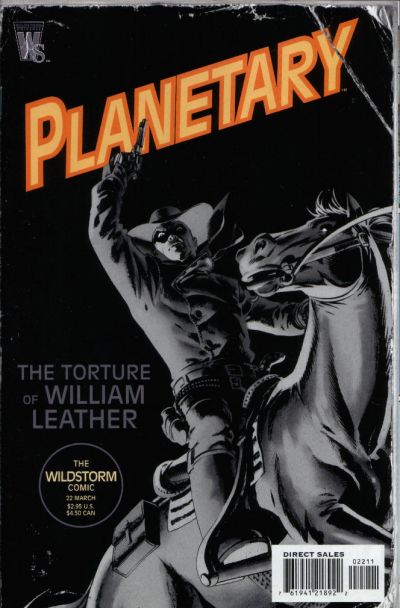Something that I find especially audacious in Azzarello’s version of Batman is the way in which we are made privy to the secrets of the Wayne family. This is, indeed, “a far less idyllic childhood as often portrayed”, as Rich Johnston explains. And I wholeheartedly agree with him. Batman writers have often offered us a vision of the past that seemed perhaps too good to be true: caring and kind parents, a happy childhood, a Gotham City not yet plagued by crime or corruption.
 |
| John Constantine & Batman |
Was Thomas Wayne always the noble, kindhearted philanthropist that we’ve seen in every Batman comic? Or did he also have feet of clay? Did the couple constantly yell at each other, threatening with divorce? Because that is exactly what we see in some of the most dramatic pages of this issue, wonderfully illustrated by Bermejo.
 |
| Wayne Manor |
When Martha takes Bruce to a meeting she has with a private detective, she can finally answer the question that was tormenting her: Did Thomas cheat on her? And after seeing the photographs provided by the detective, no words are necessary to explain why she’s crying. Bermejo intensifies the dramatic tension with two superb silent panels in which Martha’s movements are more than enough to convey her emotions.
 |
| Martha Wayne & Bruce Wayne |
________________________________________________________________________________________________
________________________________________________________________________________________________
El Joker está muerto. ¿O no? En el segundo número de esta impresionante y también controversial miniserie dirigida a lectores maduros, Batman continúa trabajando junto a John Constantine y Deadman para desentrañar el misterio detrás de la muerte de su archienemigo. Sin embargo, en el proceso también se ve obligado a enfrentar su propio pasado. Y revivir experiencias largo tiempo enterradas.
 |
| "The rich also cry" / "los ricos también lloran" |
Sin embargo, en Batman: Damned, Azzarello juega con la noción algo melodramática de que los ricos también lloran. Después de todo, uno podría preguntarse, ¿tener millones de dólares garantiza la felicidad? ¿O, por el contrario, ser millonario significa estar constantemente preocupados por la posibilidad de la pérdida? Lo que vemos aquí son los conflictos entre Martha y Thomas Wayne. Lee Bermejo diseña una de las versiones más majestuosas de la mansión Wayne, y en una magnífica escena que ocurre en el pasado, vemos a Bruce Wayne disfrazado del Llanero Solitario. Pero Thomas Wayne no le presta atención a su hijo, debido a su altercado con Martha.
 |
| Etrigan |
Todos los lectores saben que Batman nunca usa armas de fuego porque sus padres fueron asesinados con una pistola. Sin embargo, Azzarello sugiere una explicación menos espectacular. Frustrado debido a la constante disputa entre sus padres, el joven Bruce no puede entender lo que está pasando y, debido a su inmadurez, inmediatamente culpa a su madre e intenta dispararle con su revólver de Llanero Solitario. Martha le hace prometer a Bruce que "nunca apuntará con un arma a nadie", y esa es una promesa que Bruce mantendrá como Batman.
 |
| Harley Quinn |
Bermejo establece una conexión visual entre el fuego de un encendedor y el incendio de un edificio, un incendio del cual Batman necesita ser rescatado por el Demonio Etrigan. Debilitado, herido y agotado, el Caballero Oscuro es una presa fácil para una Harley Quinn enfurecida, que decide desabotonar los pantalones de Batman, en una escena de seducción muy agresiva. El tercer ejemplar será el último y, personalmente, no puedo esperar a ver cuál es el desenlace de la miniserie.





